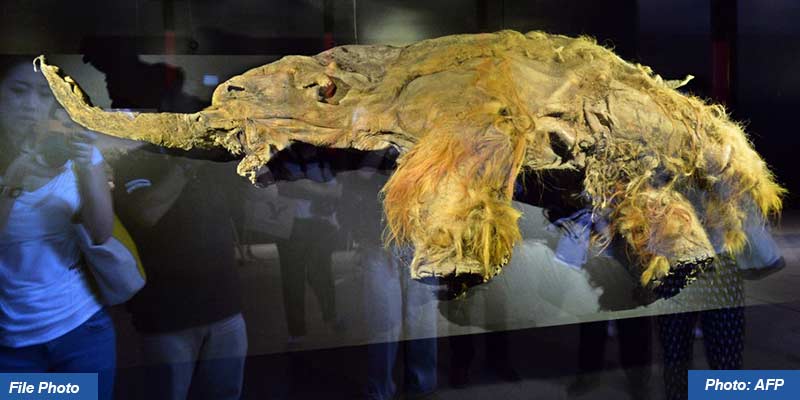- World
- Nov 17
RNA recovered from Siberian mammoth that died 39,000 years ago
• Researchers have recovered and sequenced the world’s oldest-known RNA from a 39,000-year-old woolly mammoth named Yuka, discovered in the Siberian permafrost.
• The RNA, successfully isolated and sequenced, was extracted from muscle tissue in the left front leg of a juvenile male mammoth, perhaps five to 10 years old, whose carcass was discovered in 2010 in the Siberian permafrost in the Russian Far East along the Oyogos Yar coast bordering the Laptev Sea.
• This discovery demonstrates that the fragile RNA molecule, which is crucial for carrying out the genetic instructions of DNA, can survive for much longer than previously thought.
• While ancient DNA provides a genetic blueprint, and ancient proteins show the cell’s machinery, RNA offers a unique, real-time snapshot of which genes were active at the moment of the organism's death, revealing the actual biology of the cell.
• This finding opens a new path for studying extinct species, allowing scientists to move beyond skeletal fossils and understand the functional metabolism and gene expression of prehistoric creatures.
• The researchers believe that under the right preservational conditions, such as freezing, RNA could be recovered from even older remains, promising a more comprehensive window into the biology of ancient life.
Ribonucleic acid (RNA)
• Ribonucleic acid (RNA) is a nucleic acid present in all living cells that has structural similarities to DNA.
• Unlike DNA, however, RNA is most often single-stranded. An RNA molecule has a backbone made of alternating phosphate groups and the sugar ribose, rather than the deoxyribose found in DNA.
• Attached to each sugar is one of four bases: adenine (A), uracil (U), cytosine (C) or guanine (G).
• Different types of RNA exist in cells: messenger RNA (mRNA), ribosomal RNA (rRNA) and transfer RNA (tRNA). In addition, some RNAs are involved in regulating gene expression. Certain viruses use RNA as their genomic material.
• Messenger RNA (mRNA) is the type of RNA responsible for carrying the instructions for producing proteins.
How is RNA different from DNA?
• Chemically, RNA and DNA are very similar, but they perform different biological roles. Both RNA and DNA are made up of chemical units called nucleotides that are joined together in long chains.
• While DNA is typically double-stranded, forming a ladder-like structure, RNA is often, but not always, single-stranded.
• These structural differences help these molecules perform their unique roles.
• DNA is the genetic material for all life, usually existing in long strands that are passed down from generation to generation.
• RNA molecules range widely in their lengths and are often more transient than DNA.
• If DNA is like an archive, RNA molecules are like scans or photocopies of specific documents from the archive.
• The DNA stores all the necessary information for an organism, and the RNA replicates and distributes pieces of this information as needed.

